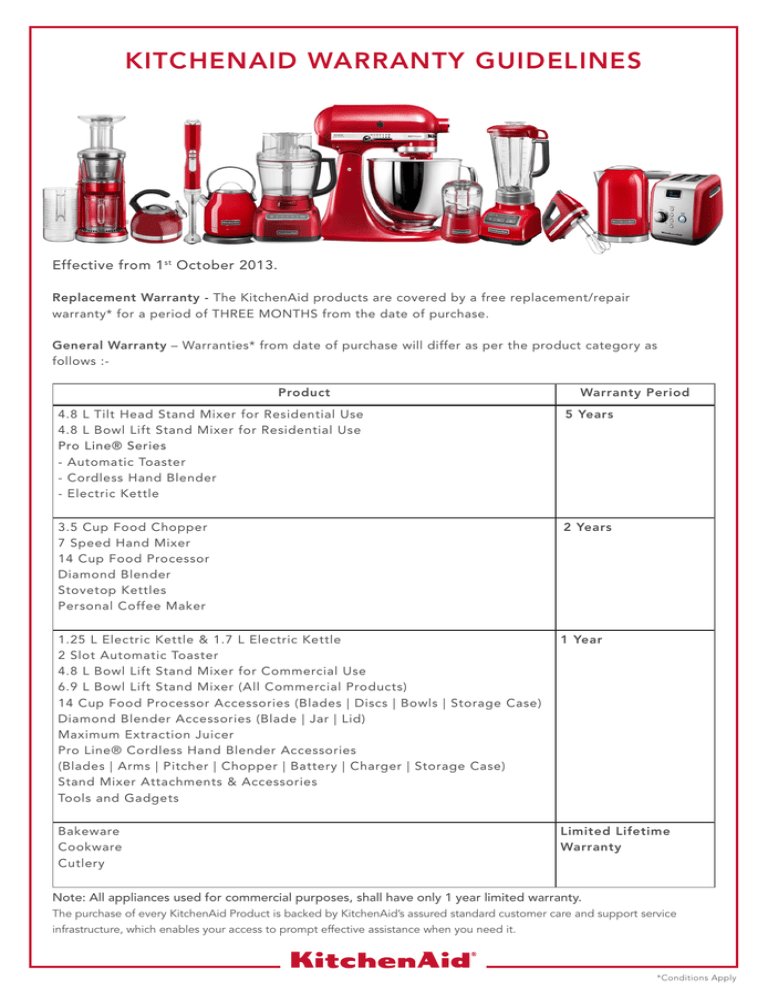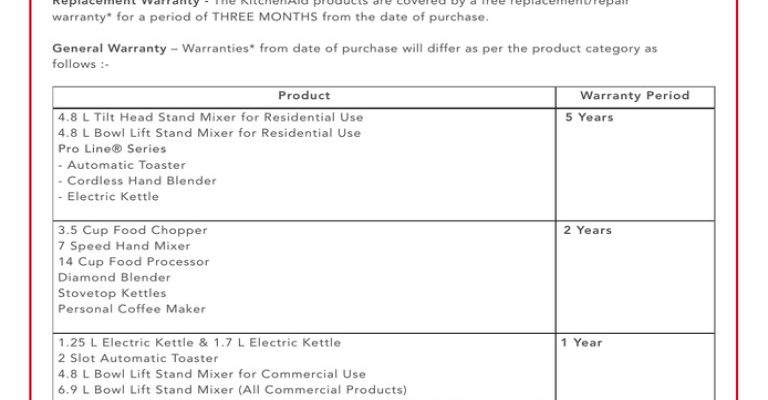
Let me explain. Think of warranty registration as setting up an “emergency contact” for your appliances. It’s a way of announcing, “Hey, I’ve officially joined the club—remember me if things go sideways!” But the big question is, does this actually speed up the help you’ll get if something goes wrong? Or is it just a fancy way for brands like Kitchenaid to gather customer info? We’re about to dig into what truly happens behind the scenes—how warranty registration can impact your service response, and what you’re really getting by taking a few minutes to fill out those details.
What Is Warranty Registration for Kitchenaid Appliances?
You might be wondering, what’s the point of warranty registration anyway? When you buy a new Kitchenaid mixer, refrigerator, or dishwasher, it typically comes with a limited warranty—basically a promise from the company to fix or replace it if things break down too soon. Registration is the step where you officially let Kitchenaid know that you’ve purchased their product, when you bought it, and sometimes a bit about how you’ll use it.
Here’s the thing: registering isn’t usually required to get warranty coverage. Kitchenaid (like most brands) will honor the warranty as long as you have proof of purchase. But registration can act as a shortcut, smoothing out the process if you ever need to call for service or troubleshooting. Imagine showing up to a busy restaurant with a reservation versus without—having your product info on file can move things along a little faster.
- What you’ll usually enter: Model number, serial number, date of purchase, and your contact info.
- Where you do it: Online at the Kitchenaid website or via a paper card in the box.
- Bonus: Some brands offer perks—think exclusive tips, recipe ideas, or even extended warranty coverage.
If you’re the sort who tosses those cards in the trash, you’re not alone. But honestly, it can be worth five minutes—especially if you want less hassle down the road.
How Warranty Registration Impacts Service Response
Now, here’s where it gets interesting. Let’s say your Kitchenaid stand mixer stops working right in the middle of prepping a cake batter. You call up Kitchenaid support or look for a local repair shop. If your appliance is registered, the company usually already has your info: model, serial number, date you got it. That means you spend less time hunting for receipts or serial numbers while your butter melts on the counter.
Why does this matter? Because service teams can start troubleshooting or processing your claim right away. There’s less back-and-forth code checking (“Can you read me that long number under the motor?”) and more focus on getting your appliance fixed or replaced. For urgent problems (like a fridge that’s not cooling), every day counts. Being registered is like having your file already prepped at the doctor’s office instead of filling out paperwork in the waiting room.
“Warranty registration doesn’t guarantee instant repairs, but it definitely cuts down on paperwork and delays when you need support the most.”
Some users report faster approvals or smoother replacements when their products are registered—because Kitchenaid knows you’re a verified owner, the process just flows better.
What Happens If You Don’t Register?
Let’s be real: forgetting to register your Kitchenaid appliance isn’t the end of the world. As long as you can dig up your purchase receipt and provide the model and serial number, your warranty is still valid. But you might end up facing a few more speed bumps in the service process.
Think of it like showing up to a concert and realizing you left your tickets at home. You’ll probably still get in, but it takes longer—maybe you have to wait while they look up your name or verify your purchase. Not registering means:
- More time spent tracking down paperwork (receipts, proof of purchase)
- Extra questions about your appliance—model, serial, purchase date
- Possible delays in claim approval if there’s missing or unclear info
If you move, lose your receipt, or need to reset your warranty claim for any reason, having skipped registration can make things a little more complicated. And if you like quick, hassle-free service, registration is a small step that can make a big difference.
Perks of Registering Beyond Service Response
Okay, so what else do you get out of warranty registration, besides maybe a quicker service response? Turns out, there’s a little more in it for you. For starters, Kitchenaid sometimes sends product updates, safety recalls, or maintenance tips—especially if your model has a known issue or gets an upgrade.
- Product alerts: You’ll hear first if there’s a recall or safety notice.
- Maintenance reminders: Get tips for cleaning, battery replacement, or troubleshooting common problems.
- Bonus resources: Recipes, how-to videos, and even codes for extended support or warranty extensions.
It’s a bit like joining a club where you get special alerts about your stuff—some people love that, others find it “meh,” but if you rely heavily on your kitchen gadgets, it’s handy.
Another perk: if you ever need to sync a new remote control, battery, or smart tool with your Kitchenaid appliance, registered users often get access to quick-start guides or priority troubleshooting. That means less time figuring things out on your own.
Comparing Kitchenaid to Other Brands
You might be curious how Kitchenaid’s warranty registration stacks up against other appliance brands. Many companies—think Whirlpool, GE, Samsung—have almost identical systems: registration is optional, but it “greases the wheels” for customer support.
For example: Some universal appliance remotes don’t care about registration; they’ll pair and work out of the box. But when it comes to bigger, high-ticket appliances that might need repairs or code resets, brands almost always prefer you register. It keeps a record of your product and service history, which speeds things up if you need troubleshooting or replacement.
- Major brands typically offer similar perks: faster support, recall notices, and sometimes special offers.
- Universal or off-brand appliances usually don’t offer registration—and their service response is often slower or more difficult to access.
If you’re someone who wants fast, hassle-free service, sticking with a brand like Kitchenaid and registering your product can really pay off.
Common Troubleshooting Scenarios and Registration
Let’s say your Kitchenaid fridge isn’t cooling right, or your dishwasher keeps flashing error codes. The first thing the support team will ask: Have you registered your appliance? If you have, they can often look up common troubleshooting steps, warranty terms, and even dispatch service with less fuss.
- Code errors: Registered appliances make it easy for techs to pull up solutions specific to your model.
- Reset or sync issues: Step-by-step guides are often sent to registered users, making DIY fixes simpler.
- Parts or battery replacements: If you need a new part, having registration info makes the process smoother.
“Tech support can feel like IT help at work: if they already know everything about your setup, you’ll spend less time explaining and more time fixing.”
Honestly, it’s not magic—but it does make those stressful “something stopped working” moments a lot less painful.
Are There Any Downsides to Registering?
It’s fair to ask: Is there a catch? The main concern some folks have with warranty registration is privacy. You’ll be asked for your name, email, and maybe how you use the appliance. Some people worry this info could lead to more marketing emails or unwanted offers.
Let me be straight with you: Most major brands—Kitchenaid included—give you the option to opt out of marketing messages. The info is mainly used for service, support, and warranty purposes. If spam worries you, just check the right boxes when registering.
- No registration required to claim warranty, but it’s helpful.
- Emails and updates can be managed or unsubscribed from at any time.
- Your info is only shared with authorized repair techs if needed for service.
If you like having a smooth service experience and easy access to troubleshooting help, the trade-off is usually worth it.
Final Thoughts: Should You Register Your Kitchenaid Appliance?
At the end of the day, warranty registration is like setting up a shortcut for when things go wrong. It won’t prevent your appliance from breaking, and it doesn’t guarantee a miracle fix. But for Kitchenaid kitchen appliances, it does make the service response noticeably faster and smoother—less paperwork, quicker troubleshooting, and a better chance of getting back to your recipes with minimal drama.
If you’re the kind of person who wants to skip unnecessary headaches, registering is a smart move. Think of it as sending a “just in case” message to future you: You’ll thank yourself if your beloved mixer or fridge ever needs a little extra help. And who knows, you might even get a new recipe or helpful tip along the way.
So, the next time that registration card pops up, maybe give it a second look. Your kitchen (and your sanity) just might thank you for it.
